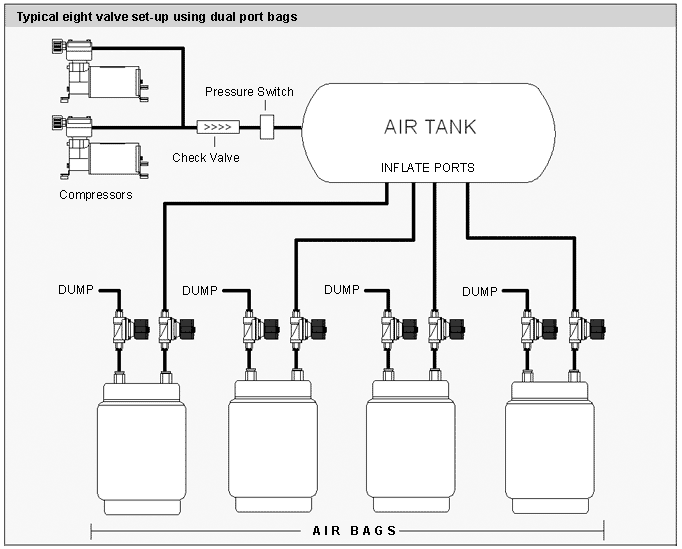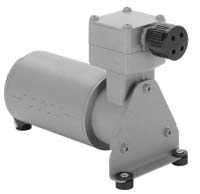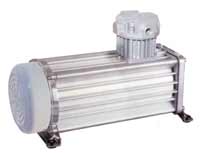The term fast bag
refers to an air suspension systsem that operates fast, ie - it airs up and down
quickly. To do this, the vehicle must have some type of on board air compressor
and reserve tank. Typical aftermarket air suspension systems use 150psi and come
with a small tank, usually between 3-6 gallons. Solenoid operated valves are typically
used to inflate and deflate the bags. Solenoid valves are great because they ease
the plumbing of the system and allow the system to be controlled electronically.
So now that you have
your air tank, 12V compressor and solenoid valves, how does everything work? The
way it works is simple. The compressor has only one responsibility: keep the tank
full. The valves allow air into and out of the bags by opening and closing the
connection between the air tank and the air bags. Switches in the cab control
the 12v solenoid valves. That's the grunt of the process, but there's really a
lot more involved than that, here's a more detailed description of the parts and
how they actually work.
Click parts of the picture to view a detailed description.

ABOVE:



